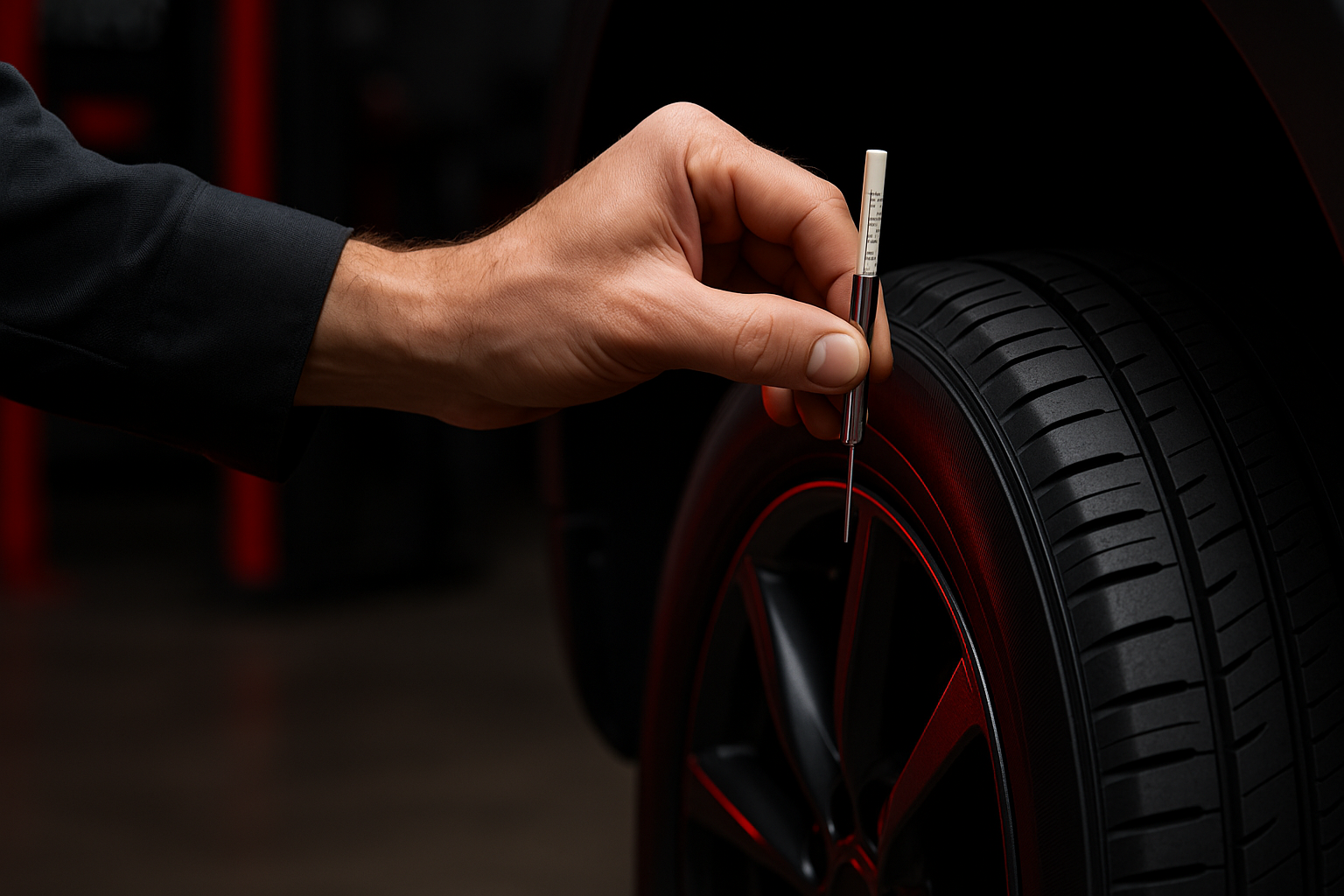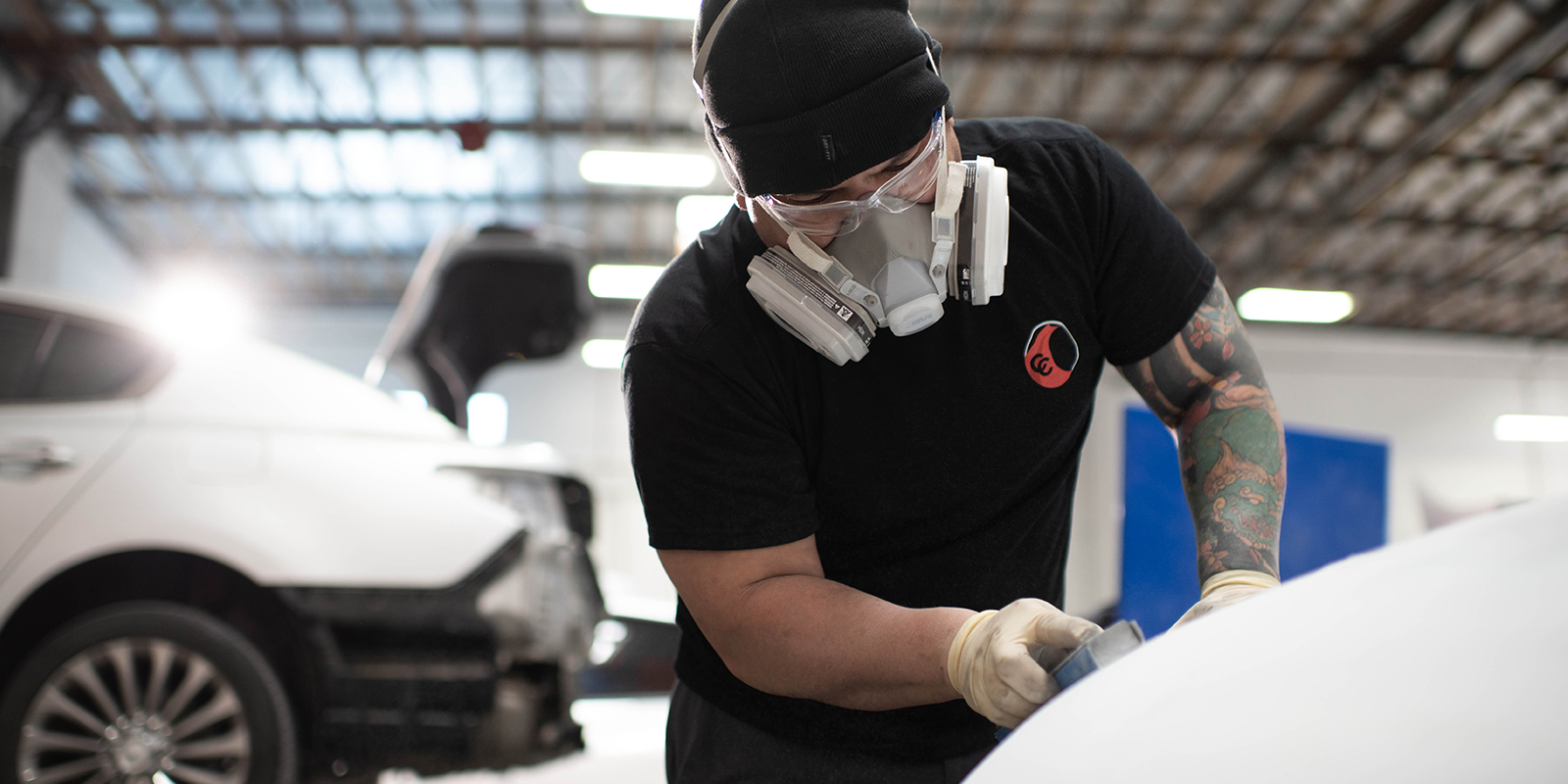How To Check Tire Tread Depth
Tire tread gives your car the necessary traction to maneuver down the road. However, most tires wear out in three to five years, depending on your driving habits, the terrain, and the local climate. Inspecting your tire tread as part of your routine car maintenance can help keep you safe with correctly functioning tires.

The Importance of Tire Tread Depth
Proper tire tread depth is 6/32 of an inch or more. When your tires wear down to 4/32 of an inch, it’s time to schedule an appointment to mount new tires. With 2/32 of an inch of tread left, you’re pushing the limits of your tires and risk loss of traction and handling.
You can also think about tire tread depth in the sense of drag racing, where “slicks,” or tires with practically no tread, provide full contact with the road. These treadless tires work well in warm conditions, where the rubber heats up to stick to the road’s surface. However, colder weather makes the rubber contract, resulting in nearly a full loss of traction.
How To Measure Tire Tread Depth
Below are several methods to measure the depth of your tire tread. Whether you only have one cent or invest in a tire tread depth gauge, checking the tire tread on your vehicle shouldn’t take more than a few minutes at each tire. Yet, those few minutes can make a huge difference the next time you try to turn the corner.
Penny Method
If you’ve got some change rattling around in your car, grab a penny and call on Abraham Lincoln to help you check your car’s tire tread:
- Turn a penny upside down, with the top of Lincoln’s head pointed towards the tire.
- Place the penny inside the tire tread closest to you.
- Compare the tread depth with how much of Lincoln’s head is covered. If you can see the top of Lincoln’s head, your tires have less than 2/32 of an inch of tread left. If you can’t see his head, your tires have deeper tread depth.
- Place the penny in two more treads across the width of the tire: one near the center and one further toward the car’s frame. Ensure a similar measurement to indicate your tires are wearing evenly. If the treads are uneven, your vehicle may be out of alignment.
Mounting the proper seasonal tires can improve wear, maintain safety, and increase longevity. Summer, sport, or performance tires incorporate a minimal-tread design that renders them dangerous during the colder months. However, running snow tires on dry pavement for long periods can quickly wear them out.
25-Cent Check
George Washington also provides a reference measurement if your tire tread checks out with a penny, but you’re still unsure about needing replacement tires. Follow these instructions to check your tire tread depth with a quarter:
- Turn a quarter upside down, with the top of Washington’s head pointed towards the tire.
- Place the quarter inside the tire tread closest to you.
- Compare the tread depth with how much of Washington’s head is covered. If you can see the top of Washington’s head, your tires have less than 4/32 of an inch of tread left. If you can’t see his head, your tires have deeper tread depth.
- Place the quarter in two more treads across the width of the tire: one near the center and one further toward the car’s frame. Ensure a similar measurement to indicate your tires are wearing evenly. If the treads are uneven, your vehicle may be out of alignment.
Uneven tire tread wear can also stem from underinflating or overinflating your tires. Overinflation typically results in more wear down the center of the tire tread as the rubber expands with excess air. You can spot underinflated tires on other cars by looking for bulges on either side of the tire where it meets the road, which translates to uneven wear near the tire's edges.
Tire Tread Depth Gauge
If you’re looking for a more precise method of measuring tire tread depth, a tire tread depth gauge is the perfect tool. You can order a tire tread depth gauge online or visit your local auto parts store to purchase one.
- Place the tip of the tire tread depth gauge inside the closest tread to the outside of the wheel. Press the indicator down until the shoulders flush on the tire’s surface.
- Consult the gauge for a reading on the tire tread depth. Compare this to readings across the tire's width to ensure an even wear pattern. Tires with uneven tread wear can indicate the need for an alignment.
Consider investing in a tire pressure gauge and a tire tread depth gauge. As you check the tread of each tire on your car, measure the pressure to maintain fuel efficiency and avoid complications down the road.
Tread Wear Indicator Bars
Modern tires are also equipped with tread wear indicator bars, which are raised 2/32 of an inch. Here’s how to measure tire tread depth with tread wear indicator bars:
- Locate the tread wear indicator bars on your tires. They’re often placed at the end of the tread grooves.
- Compare the height of the tire tread to that of the tread wear indicator bars.
- If the tread depth stands taller than the indicator bars, your tires are safe to use.
- When the tire tread wears down to equal height with these bars, replace your tires immediately.
Tire tread wear indicator bars provide a tactile and visual indication of tread depth. However, they can be less precise than using a coin or tire tread depth gauge.
Routine Maintenance: Tire Tread Checks
Performing routine maintenance, such as checking your vehicle's tire tread, can help keep it in working order. While you can purchase an inexpensive tire tread gauge, you only need a cent (or quarter) to complete the job. Keep $0.26 in your car at all times, and you’re set to check your car’s tire tread anywhere, at any time.




